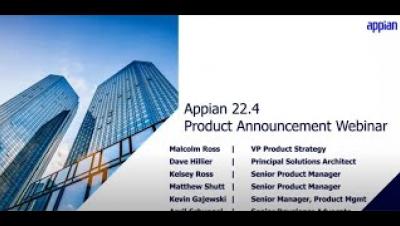Appian 22.4: Codeless Data Fabric (Plus Better Portals, DevOps, Process Mining, Security, and More)
Our mission to help you improve and streamline how you operate continues. Process automation is the foundation of what we do. Appian 22.4 brings Appian Data Fabric, a wealth of new features, and a unified software development lifecycle experience that stretches across the entire platform to simplify and accelerate all your most critical business processes. If you want to learn about everything new in Appian 22.4, check out the 22.4 release webinar. Highlights from the 22.4 release.








